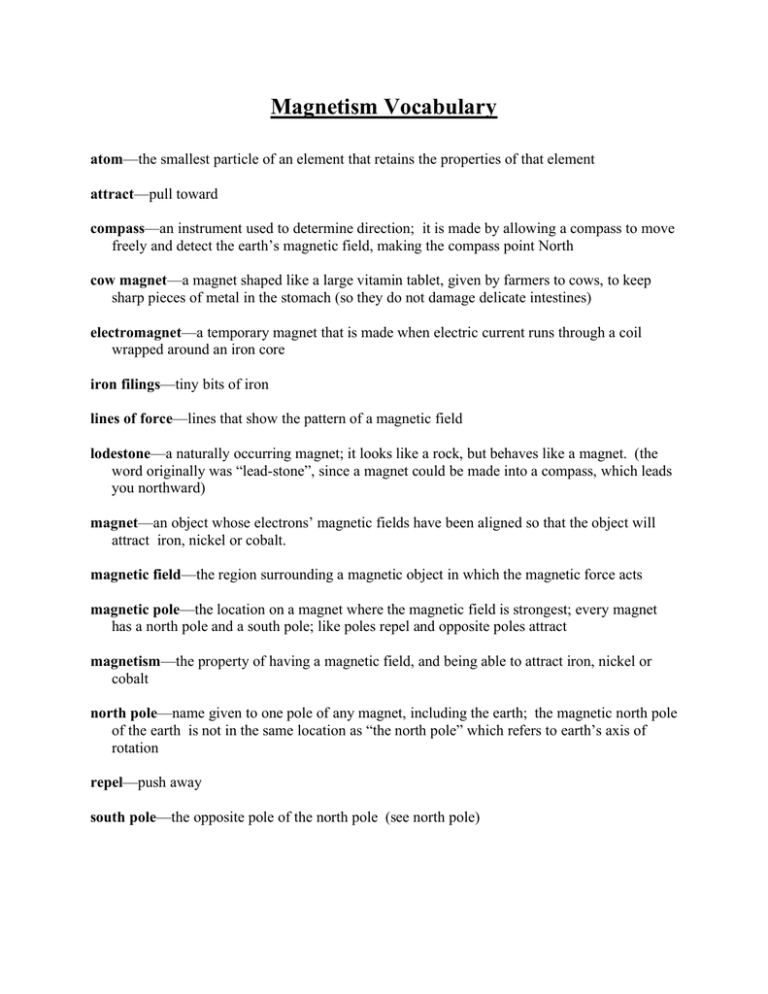Magnetism Vocabulary
advertisement

Magnetism Vocabulary atom—the smallest particle of an element that retains the properties of that element attract—pull toward compass—an instrument used to determine direction; it is made by allowing a compass to move freely and detect the earth’s magnetic field, making the compass point North cow magnet—a magnet shaped like a large vitamin tablet, given by farmers to cows, to keep sharp pieces of metal in the stomach (so they do not damage delicate intestines) electromagnet—a temporary magnet that is made when electric current runs through a coil wrapped around an iron core iron filings—tiny bits of iron lines of force—lines that show the pattern of a magnetic field lodestone—a naturally occurring magnet; it looks like a rock, but behaves like a magnet. (the word originally was “lead-stone”, since a magnet could be made into a compass, which leads you northward) magnet—an object whose electrons’ magnetic fields have been aligned so that the object will attract iron, nickel or cobalt. magnetic field—the region surrounding a magnetic object in which the magnetic force acts magnetic pole—the location on a magnet where the magnetic field is strongest; every magnet has a north pole and a south pole; like poles repel and opposite poles attract magnetism—the property of having a magnetic field, and being able to attract iron, nickel or cobalt north pole—name given to one pole of any magnet, including the earth; the magnetic north pole of the earth is not in the same location as “the north pole” which refers to earth’s axis of rotation repel—push away south pole—the opposite pole of the north pole (see north pole)



